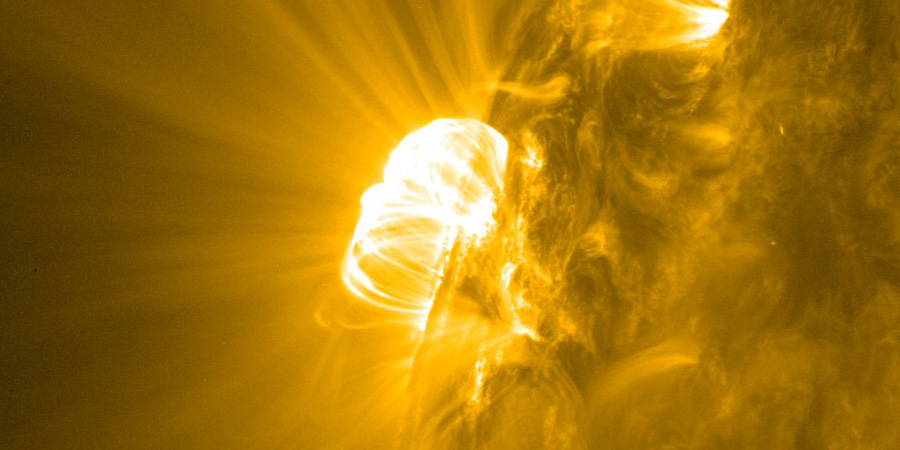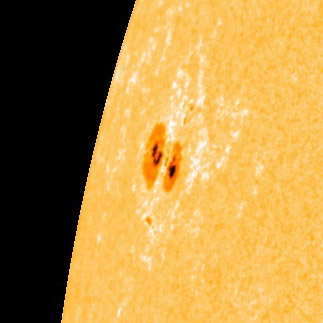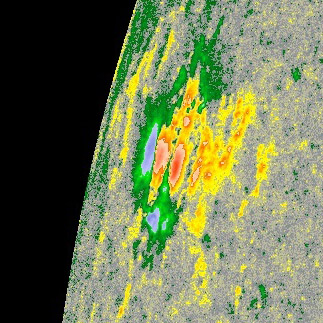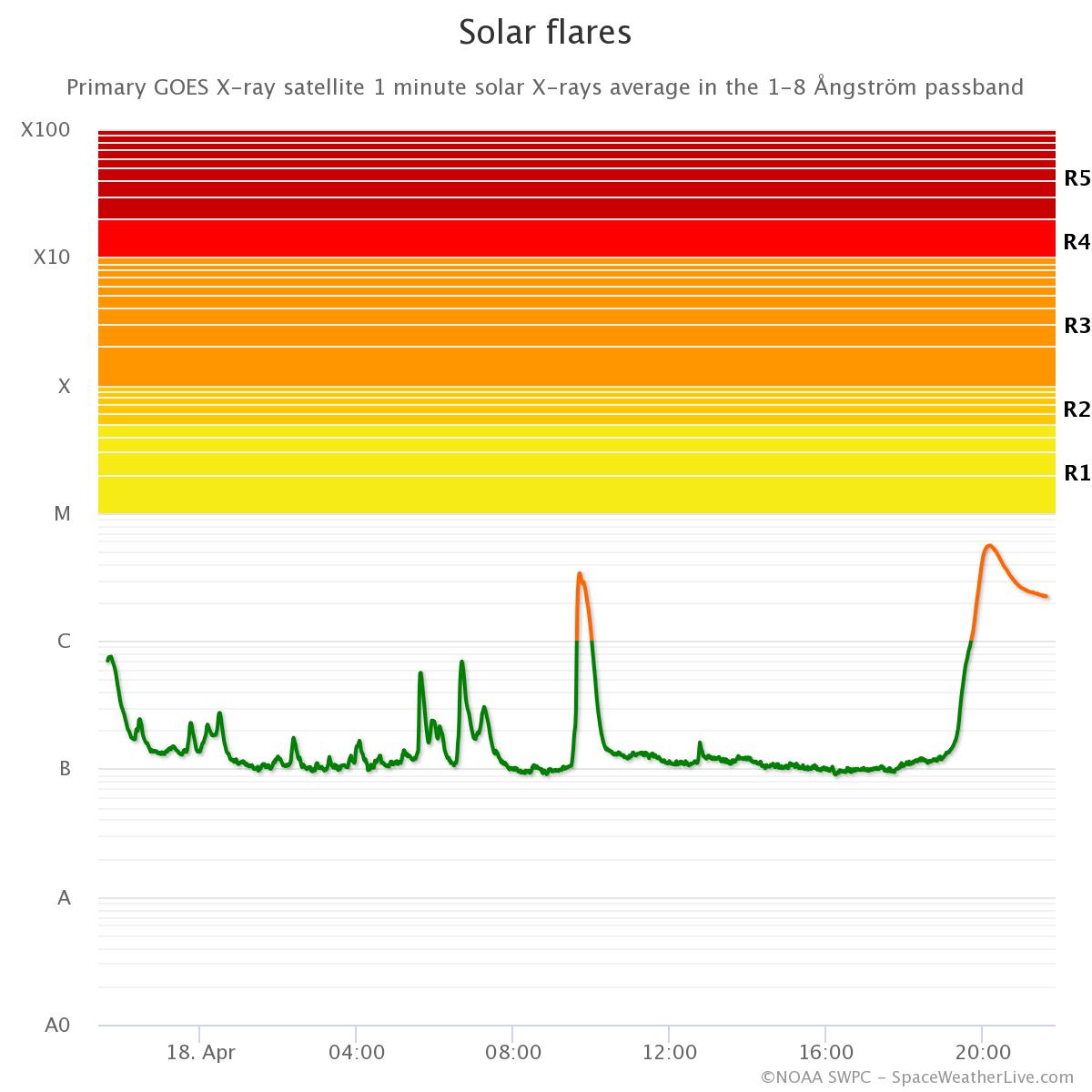Old sunspot region 2644 is back!
Tuesday, 18 April 2017 21:50 UTC

The remnants of old sunspot region 2644 (which was responsible for seven M-class solar flares during the first few days of this month) have now rotated back onto the earth-facing solar disk. It should receive sunspot number 2651 later today from the NOAA SWPC.
While this sunspot region is still too close to the eastern solar limb to accurately analyse its magnetic layout, we do see a couple of sunspots that survived the trip around the far side of the Sun. We do have to conclude that the region decayed quite a bit while transiting the far side but it is still showing signs of life as it produced two interesting C-class solar flares today.


⇧ SDO/HMI images showing old sunspot region 2644. Images available on our SDO page.
The first C-class solar flare it produced today was an C3.3 event that peaked at 09:41 UTC. It was eruptive and produced a minor coronal mass ejection that was not earth-directed. Another C-class solar flare peaked today at 20:10 UTC and reached C5.5. This C5.5 solar flare was a very long duration event and also very likely to be eruptive as seen on SDO imagery. The event even produced Type II and IV radio sweeps. There is no coronagraph imagery available yet to confirm this but the plasma cloud launched by the C5.5 solar flare is also likely not directed towards Earth.

⇧ Solar flare chart of the past 24 hours. Noteworthy are the two C-class solar flares. Live graph on this page.
Coronal hole solar wind stream
A coronal hole solar wind stream was expected to arrive yesterday and minor G1 geomagnetic storm conditions were possible. The stream however never arrived yesterday and no storm conditions were observed. The coronal opening was likely too far south on the solar disk to affect our planet. Instead, we are seeing a rise in the solar wind density right now which likely comes from the leading edge of the coronal hole solar wind stream that was expected to arrive yesterday. This solar wind likely comes from a more northward opening in the solar corona. A minor G1 geomagnetic storm watch remains in place for the coming 24 hours.
Thank you for reading this article! Did you have any trouble with the technical terms used in this article? Our help section is the place to be where you can find in-depth articles, a FAQ and a list with common abbreviations. Still puzzled? Just post on our forum where we will help you the best we can!
Latest news
Latest forum messages
More topicsSupport SpaceWeatherLive.com!
A lot of people come to SpaceWeatherLive to follow the Sun's activity or if there is aurora to be seen, but with more traffic comes higher server costs. Consider a donation if you enjoy SpaceWeatherLive so we can keep the website online!

Space weather facts
| Last X-flare | 2024/12/08 | X2.2 |
| Last M-flare | 2024/12/26 | M7.3 |
| Last geomagnetic storm | 2024/12/17 | Kp5+ (G1) |
| Spotless days | |
|---|---|
| Last spotless day | 2022/06/08 |
| Monthly mean Sunspot Number | |
|---|---|
| November 2024 | 152.5 -13.9 |
| December 2024 | 119.3 -33.2 |
| Last 30 days | 122 -35.7 |


